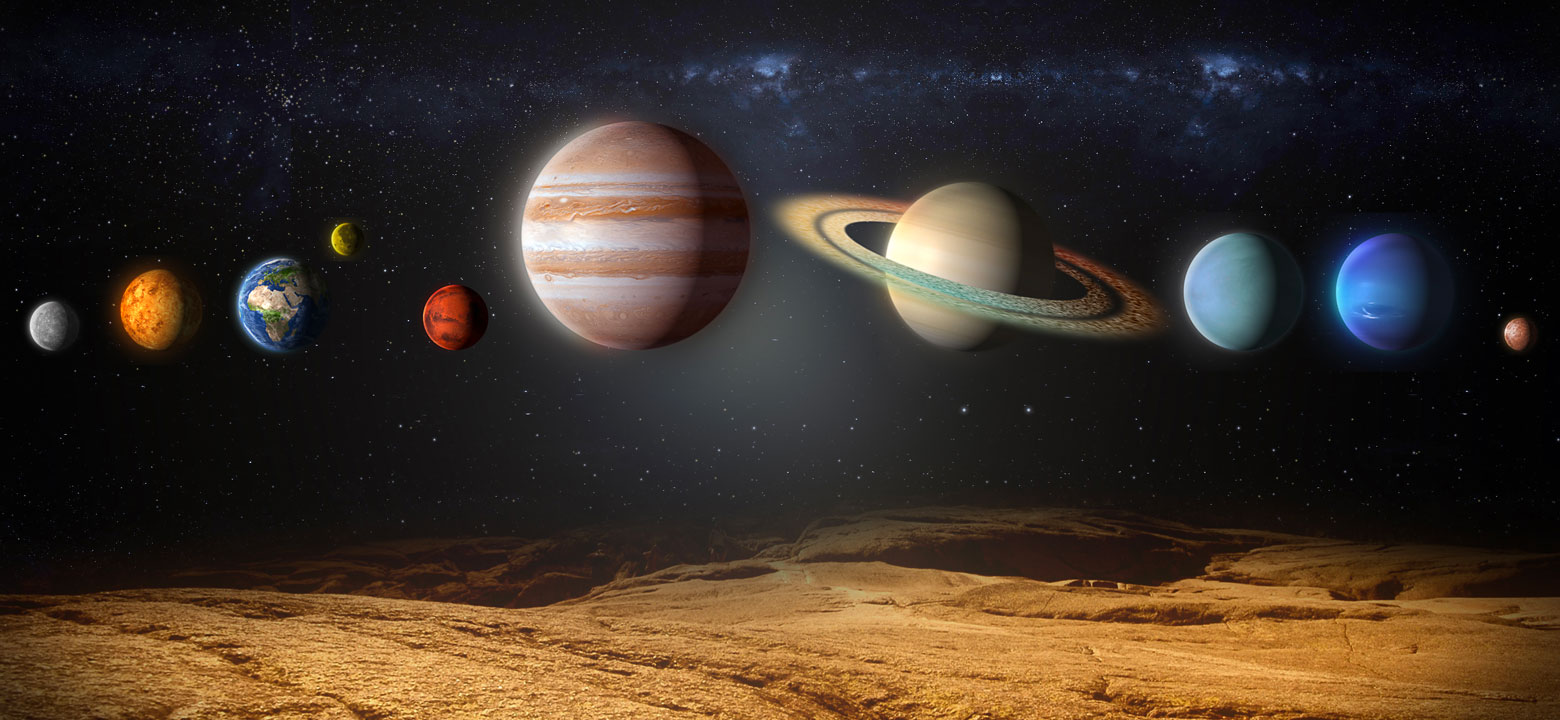
The solar system was created roughly 4.6 billion years ago, as clouds of hydrogen dust and gas coalesced into a hot, very dense sun at the center. This sun was surrounded by a solar nebula formed from the remaining gas and dust. Particles accreted into larger bodies, and the heat of the sun created a line of demarcation between the rocky planets and the gaseous ones. This timeline describes what we know so far. Recently, observations of the Ophiuchus star-forming complex have yielded new information.
In the 70s, scientists discovered that meteorites contained the remnants of short-lived radioactive material. They came to the conclusion that this was a byproduct of the earliest stages of the solar system's development when radioactive material could've been blown into the cloud of dust and gas by solar wind from a massive entity called a Wolf-Rayet star, or from a nearby supernova. Until now, this has been the prevailing scenario. New research has helped to shed some light on exactly how this process occurs, and where this radioactive material comes from.
The constellation of Ophiuchus contains an entity known as the Ophiuchus star-forming complex. This is a region that's actively forming new stars. This gives scientists the opportunity to observe an analog of the conditions our own solar system went through at its birth. The authors of a study published on August 16th in Nature Astronomy used multi-wavelength data taken from this star-forming region to observe the interactions between young stars and the clouds of dust and gas that eventually become stars.
What's most interesting about Ophiuchus is that it's very ordinary. It's not a particularly remarkable star-forming region. It's also one of the closest ones to our solar system, at only 427 light-years away. This makes it ideal for studying and drawing conclusions about the formation of other stars in the Milky Way galaxy.
Ophiuchus contains multiple stars at different life stages, from prestellar cores to gas clouds, to nebulae. Some are in the process of forming solar systems of their own, with dust and gas accreting into protoplanetary masses. Researchers focused on aluminum-26, an isotope of aluminum that decays into magnesium-26, often found in tiny calcium-aluminum-rich inclusions in meteorites. They were able to observe a flow of this radioactive material from a cluster of young stars to the star-forming region.
John Forbes, at the Flatiron Institute’s Center for Computational Astrophysics, created a way of modeling all of the stars that could have existed in the area—including characteristics like age, mass, the likelihood of going supernova, and potential yield of aluminum-26. This, in turn, allowed him to develop a statistical model for determining the likelihood of various origins for aluminum-26. This analysis yielded an interesting find: Aluminum-26 contamination had a 59% chance of occurring due to supernovas, and a 68% chance of occurring due to multiple causes beyond a single supernova.
This is a major step. When scientists originally posited that radioactive material came from the solar wind, they could only dream of being able to quantify the likelihood of this origin.
Researchers also noted that the composition of newborn stars and planets vary widely—often by several orders of magnitude. While the Earth's solar system appears to be fairly average in terms of aluminum-26 content, some systems contain far more, and others contain far less.
This can have an impact on the formation of new planetary systems. Aluminum-26 serves as a heating source early in their formation. Larger quantities of this isotope means more heat, which may lead to drier planets. Planetary systems in regions with a high aluminum-26 contamination may have a lower likelihood of containing water, and therefore life.
This study combines a prevailing hypothesis on the formation of our solar system with modern imaging and data-gathering techniques to help shed some light on exactly how newborn solar systems interact with the entities around them. This doesn't just help us learn more about our own sun and neighboring planets, but may help scientists narrow down regions containing exoplanets capable of hosting life.